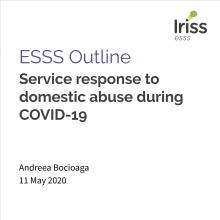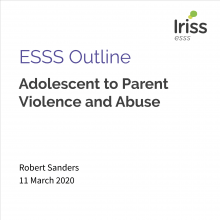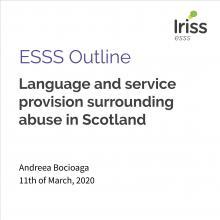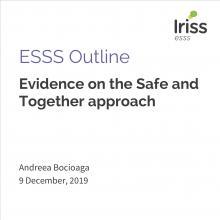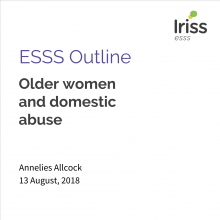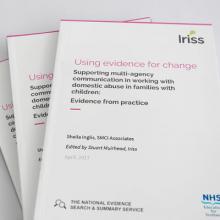What is Safe and Together?
Safe and Together, originally developed in the USA, is a suite of tools and interventions to transform child welfare practice in cases of domestic violence (Humphreys, Healey and Mandel, 2018). The authors assert that the approach ‘...provides a robust foundation upon which practitioners from statutory and non-statutory backgrounds can work collaboratively and reach consensus about how best to ensure the safety and wellbeing of children living with domestic family violence’ (p1).
Why is it important?
In June 2017, Social Work Scotland joined a consortium that seeks to implement the Safe and Together approach in Scotland alongside Scottish Women’s Aid, Barnardo’s and the Improvement Service (which hosts the National Violence Against Women Network). In April 2019, The Scottish Parliament passed new legislation which recognises coercive control as a domestic abuse offence. Building on these developments, several local authorities are re-evaluating their approach to tackling domestic abuse and improving the support they give to women and children, as well as to perpetrators of domestic abuse. Ten local authorities now use the Safe and Together approach (Scott, 2019).
What are the principles?
There are three principles to the Safe and Together approach (Safe and Together Institute, 2017):
- Keeping children with survivor parent / guardian
- Partnering with surviving parent as a default position
- Intervening with abuse perpetrator to reduce risk and harm to children
What are the components?
Planning and decisions regarding the child’s wellbeing are informed by five components (Safe and Together Institute, 2017):
- The perpetrator’s pattern of coercive control
- Actions taken by perpetrator
- Full spectrum of efforts of surviving parent
- The adverse impact this has on the child
- The wider role of substance abuse, cultural and other factors
Practice implications of the approach have been linked with better assessment processes, better partnerships and better case plans (Scott, 2019; Safe and Together, 2018). However, more evidence is needed on how Safe and Together affects long-term outcomes for child protection.
What does this mean for me?
Andrea Davidson, Team Leader in a Children’s Social Work Practice Team, North West Edinburgh
Edinburgh’s journey with Safe and Together began in 2015, with the delivery of the first core training by David Mandell. Edinburgh currently has over 200 Safe and Together core practitioners across its frontline services, including social work, police, housing, health and voluntary agencies. The approach thrives in a working environment that supports restorative practice models, and allows workers to take individualised approaches to working with families.
As a manager in a frontline children’s social work practice team, I increasingly see workers using Safe and Together in their everyday practice. For example, when we meet with survivors, we are keen to hear how they are keeping their children safe, and validate these actions, acknowledging that it is harder to meet children’s needs while also experiencing domestic abuse. We work with survivors creatively, listening to their views and making individualised plans to support them. The sense is that survivors are more willing to engage with us, as they do not feel that they are being held responsible for the perpetrator’s behaviour.
Our assessments and our Child’s Plans contain more detailed information in terms of the perpetrator’s pattern of behaviour, naming those behaviours and linking them to actual harm to the child, and being clear about what needs to change and why. To be able to effect real change, perpetrators need to know what they need to do. This also helps decision makers, such as Children’s Panels, understand the issues within the family, and can enable them to make better decisions, particularly in relation to child contact.
Engaging with perpetrators remains challenging, but I see workers making more concerted efforts to meet with them to discuss their role as a parent, and how we can support them to be a better parent. When perpetrators choose not to engage with us, they remain the focus of our assessments and planning.
Safe and Together now forms part of Edinburgh’s discourse when we consider our approach to working with families where domestic abuse is a concern, and this is something that will continue to be supported and promoted across the city.


